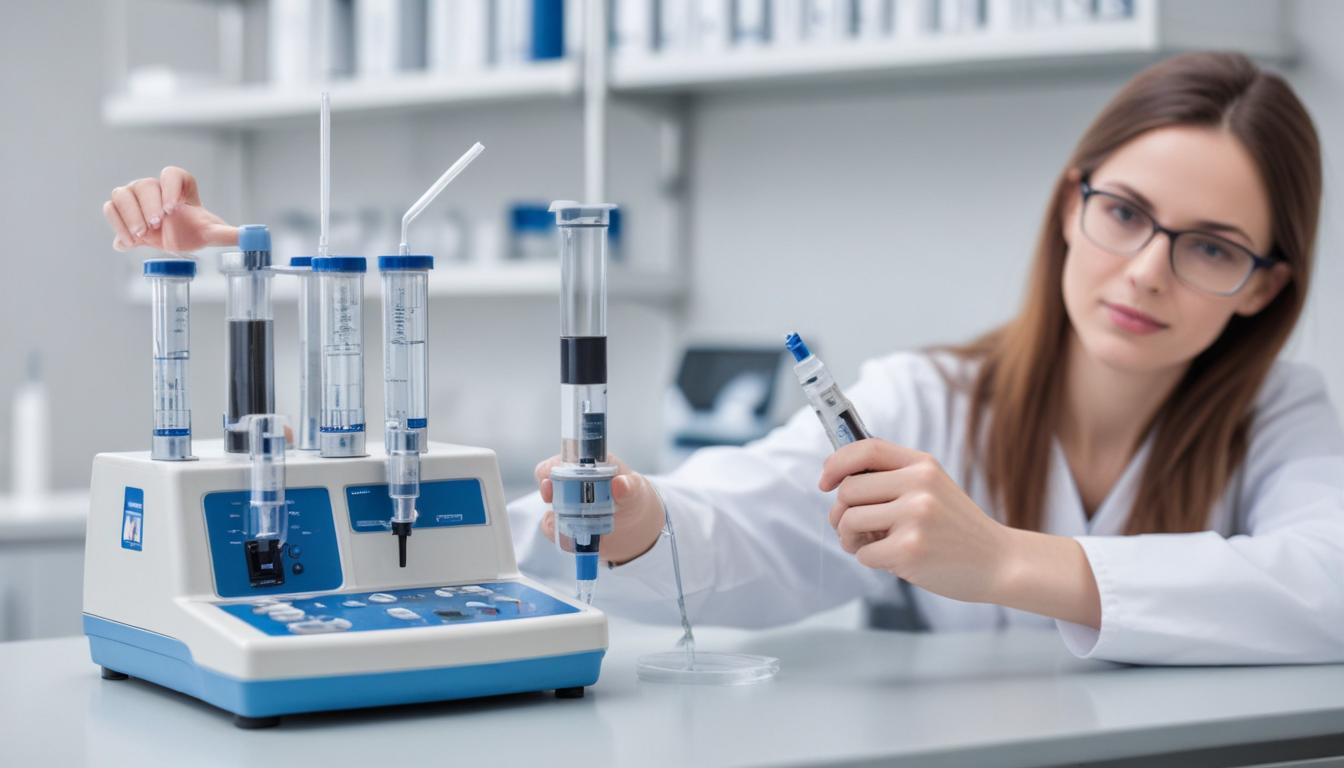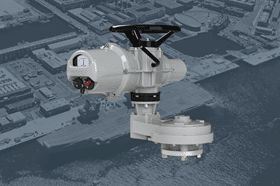the benefits of using syringe pumps in laboratories
Syringe pumps provide exceptional precision in fluid delivery, which is paramount in various laboratory applications. By allowing meticulous regulation of flow rates and volumes, these devices ensure that experiments are conducted under exact conditions, thereby enhancing the reliability of results.
Key aspects of precise fluid control include:
- Accurate Flow Rate Adjustment: Syringe pumps enable users to set and maintain specific flow rates, ranging from microliters per hour to several milliliters per minute, tailored to the requirements of the experiment.
- Fine Volume Dispensing: The ability to dispense exact volumes with minimal deviation is crucial for applications such as titrations, reagent additions, and sample injections.
- Programmable Operation: Advanced syringe pumps offer programmable parameters, allowing for complex fluid delivery profiles, including multi-step protocols and variable rates over time.
- Consistent Performance: High-precision mechanical components and robust software control minimize errors and drifts, ensuring consistent performance across multiple runs.
Additionally, the integration of feedback systems in syringe pumps allows for real-time monitoring and adjustments, compensating for factors like temperature fluctuations and syringe compliance. This level of control is particularly beneficial in sensitive laboratory procedures such as chromatography, microfluidics, and automated synthesis, where even slight variations in fluid delivery can significantly impact the outcomes.
By leveraging the precise control capabilities of syringe pumps, laboratories can achieve higher accuracy, reduce variability, and enhance the overall quality of their experimental data.
increased reproducibility in experiments
Enhanced reproducibility is a cornerstone of reliable scientific research, and syringe pumps play a pivotal role in achieving this standard within laboratories. By providing consistent and accurate fluid delivery, these devices minimize the variability that can arise from manual handling and human error, thereby ensuring that experiments can be reliably repeated with the same outcomes.
Key factors contributing to increased reproducibility include:
- Consistent Flow Rates: Syringe pumps maintain stable flow rates over extended periods, which is essential for experiments that require steady conditions. This consistency reduces fluctuations that could otherwise lead to inconsistent results.
- Precision Volume Control: The ability to dispense exact volumes repeatedly ensures that each experiment starts with the same quantities of reagents and samples, eliminating discrepancies caused by volume variations.
- Automated Protocols: Programmable syringe pumps can execute complex sequences of fluid delivery without manual intervention, ensuring that each step is performed identically across multiple trials.
- Reduced Operator Variability: Automation diminishes the influence of individual operator techniques, leading to more uniform experimental conditions and outcomes.
Furthermore, the integration of syringe pumps with laboratory information management systems (LIMS) facilitates meticulous tracking and documentation of experimental parameters. This integration allows for seamless data management and enhances the ability to replicate studies accurately.
| Benefit | Description |
|---|---|
| Minimized Human Error | Automation reduces mistakes associated with manual pipetting, such as inaccurate volume measurements or inconsistent timing. |
| Standardized Procedures | Pre-programmed settings ensure that each experiment adheres to the same protocol, facilitating reliable comparisons and reproducibility. |
| Enhanced Data Integrity | Precise and consistent fluid handling contributes to higher quality data, which is crucial for validating experimental hypotheses. |
In addition to these benefits, syringe pumps allow for meticulous control over experimental variables, such as temperature and pressure, which can further enhance the reproducibility of sensitive assays. By maintaining a stable environment and ensuring precise delivery of reagents, laboratories can achieve more dependable and replicable results.
Ultimately, the use of syringe pumps in laboratories not only streamlines experimental workflows but also upholds the integrity of scientific data by fostering an environment of consistency and reliability. This increased reproducibility is essential for advancing research, validating findings, and building a robust foundation for future scientific endeavors.
enhanced safety features
Syringe pumps incorporate a range of safety features that are crucial for maintaining a secure laboratory environment. These features not only protect laboratory personnel from potential hazards but also safeguard the integrity of sensitive experiments.
One of the primary safety advantages is the minimization of exposure to hazardous substances. By automating fluid delivery, syringe pumps reduce the need for manual handling of dangerous reagents, thereby lowering the risk of spills, splashes, and accidental contact. This automation is particularly beneficial when working with toxic, corrosive, or volatile chemicals.
Key safety features include:
- Automated Shut-Off Mechanisms: Syringe pumps are equipped with sensors that detect blockages, air bubbles, or other irregularities in the fluid pathway. In such events, the pump can automatically halt operation, preventing overflows or unintended releases of hazardous materials.
- Leak Detection Systems: Advanced models may feature leak detection capabilities that alert users to potential breaches in the syringe or tubing, allowing for immediate corrective action.
- Emergency Stop Buttons: Easily accessible emergency stop controls enable users to quickly halt pump operations in case of an unforeseen incident, ensuring rapid response to emergencies.
- Enclosed Mechanisms: Many syringe pumps have enclosed designs that limit direct contact with moving parts and the fluids being dispensed, reducing the risk of contamination and exposure.
- Redundant Alarms and Alerts: Multiple alarm systems notify users of operational anomalies through visual and auditory signals, ensuring that any potential issues are promptly addressed.
Furthermore, syringe pumps often include programmable parameters that enforce safety protocols, such as maximum flow rates and volume limits. By setting these limits, laboratories can prevent accidental over-dosing of reagents, which is especially important in biological and chemical assays where precise concentrations are critical.
| Safety Feature | Function |
|---|---|
| Automated Shut-Off | Prevents overflows and uncontrolled releases by stopping the pump when irregularities are detected. |
| Leak Detection | Identifies and alerts users to leaks in the system, minimizing exposure to hazardous fluids. |
| Emergency Stop | Allows immediate cessation of pump operations to address sudden safety concerns. |
| Enclosed Mechanisms | Reduces direct contact with fluids and mechanical parts, enhancing user safety. |
| Redundant Alarms | Ensures that any operational issues are promptly communicated to users through multiple alert systems. |
Additionally, syringe pumps contribute to improved workplace ergonomics by reducing the need for repetitive manual tasks, which can lead to strain injuries over time. By automating the fluid dispensing process, these pumps allow laboratory personnel to focus on other critical aspects of their work, enhancing overall productivity and safety.
In summary, the enhanced safety features of syringe pumps provide significant benefits to laboratories by protecting users from hazardous exposures, preventing accidents through automated controls, and ensuring that experimental conditions remain secure and stable. These safety enhancements are integral to maintaining a safe and efficient laboratory environment, ultimately supporting the well-being of both personnel and the integrity of scientific research.
improved efficiency in laboratory workflows
 Syringe pumps significantly enhance the efficiency of laboratory workflows by automating fluid handling processes, reducing manual interventions, and optimizing resource utilization. This automation leads to faster turnaround times, minimizes the potential for human error, and allows laboratory personnel to focus on more critical tasks, thereby increasing overall productivity.
Syringe pumps significantly enhance the efficiency of laboratory workflows by automating fluid handling processes, reducing manual interventions, and optimizing resource utilization. This automation leads to faster turnaround times, minimizes the potential for human error, and allows laboratory personnel to focus on more critical tasks, thereby increasing overall productivity.
Key factors contributing to improved efficiency include:
- Automated Fluid Dispensing: By automating the precise delivery of liquids, syringe pumps eliminate the need for repetitive manual pipetting, which can be time-consuming and prone to inaccuracies.
- Time Savings: Automated protocols enable continuous operation of experiments without the need for constant supervision, allowing for simultaneous handling of multiple tasks and faster completion of laboratory procedures.
- Integration with Laboratory Equipment: Syringe pumps can seamlessly interface with other laboratory instruments such as chromatography systems, spectrometers, and microfluidic devices, facilitating synchronized and streamlined workflows.
- Programmable Operations: The ability to program complex sequences and adjust parameters on-the-fly allows for flexible experimentation, reducing the time required to set up and modify experimental conditions.
- Reduction of Consumables: Precise dispensing minimizes waste of reagents and samples, leading to cost savings and more sustainable laboratory practices.
- Enhanced Data Management: Integration with laboratory information management systems (LIMS) allows for automated data entry and tracking, reducing administrative burdens and improving data accuracy.
Moreover, syringe pumps contribute to a more organized and orderly laboratory environment by standardizing fluid handling procedures. This standardization not only accelerates the training process for new personnel but also ensures consistent performance across different operators and shifts.
| Efficiency Aspect | Description |
|---|---|
| Automation of Routine Tasks | Reduces the need for manual intervention in fluid handling, freeing up time for more complex and value-added activities. |
| Faster Throughput | Enables higher experimental throughput by allowing multiple processes to run concurrently without bottlenecks. |
| Consistency and Reliability | Ensures consistent execution of protocols, leading to fewer delays caused by troubleshooting and error correction. |
| Resource Optimization | Optimizes the use of reagents and samples through precise dispensing, reducing waste and associated costs. |
| Enhanced Workflow Integration | Facilitates seamless integration with other laboratory systems and instruments, promoting a cohesive and efficient operational flow. |
In addition to these direct benefits, syringe pumps support scalability within laboratories. As research demands grow, automated systems can be expanded or adjusted with minimal disruption to existing workflows. This scalability ensures that laboratories can adapt to increasing workloads without compromising on efficiency or quality.
Furthermore, the use of syringe pumps enhances predictive maintenance and operational planning. Advanced models often include diagnostic tools and usage tracking, allowing for proactive maintenance schedules and reducing unexpected downtimes. This proactive approach ensures that laboratory operations remain uninterrupted and that equipment is always functioning at optimal levels.
Overall, the implementation of syringe pumps in laboratory settings leads to a more efficient, reliable, and scalable workflow structure. By automating critical aspects of fluid handling, laboratories can achieve higher productivity levels, improve resource management, and maintain consistent experimental conditions, all of which are essential for advancing scientific research and achieving high-quality results.
versatility across different applications
Syringe pumps offer remarkable adaptability, making them indispensable tools across a wide spectrum of laboratory applications. Their ability to precisely control fluid delivery, combined with programmable features, allows them to be seamlessly integrated into diverse experimental setups, enhancing both flexibility and functionality within laboratories.
Key applications where syringe pumps demonstrate their versatility include:
- Chromatography: In techniques such as High-Performance Liquid Chromatography (HPLC) and Gas Chromatography (GC), syringe pumps provide consistent solvent flow rates, ensuring accurate separation and analysis of compounds.
- Microfluidics: Syringe pumps are essential in microfluidic devices for the precise manipulation of tiny fluid volumes, enabling complex biological assays, cell sorting, and chemical reactions on a microscale.
- Automated Synthesis: In chemical and pharmaceutical synthesis, syringe pumps facilitate the automated addition of reagents, allowing for complex multi-step reactions to be carried out with high precision and repeatability.
- Biological Research: Applications such as cell culture, enzyme kinetics studies, and drug delivery systems benefit from the controlled delivery of nutrients, substrates, and therapeutic agents provided by syringe pumps.
- Environmental Testing: Syringe pumps are used in the sampling and analysis of environmental samples, ensuring accurate and consistent delivery of water, air, or soil extracts for testing pollutants and other contaminants.
- Analytical Spectroscopy: Coupling syringe pumps with spectroscopic instruments allows for the precise introduction of samples, enhancing the reliability and accuracy of measurements in UV-Vis, IR, and fluorescence spectroscopy.
- Medical Applications: Beyond the laboratory, syringe pumps are employed in clinical settings for controlled drug administration, IV infusions, and other therapeutic procedures, showcasing their broad applicability.
| Application Area | Function of Syringe Pumps |
|---|---|
| Chromatography | Maintains stable solvent flow rates for precise separation and analysis of chemical compounds. |
| Microfluidics | Enables accurate manipulation of micro-liter volumes for complex biological and chemical assays. |
| Automated Synthesis | Automates the addition of reagents in multi-step chemical and pharmaceutical synthesis processes. |
| Biological Research | Controls the delivery of nutrients, substrates, and drugs in cell culture and enzymatic studies. |
| Environmental Testing | Ensures accurate sampling and analysis of environmental samples for pollutants and contaminants. |
| Analytical Spectroscopy | Facilitates the precise introduction of samples, enhancing measurement accuracy in various spectroscopic techniques. |
| Medical Applications | Delivers controlled doses of medication and therapeutic agents in clinical settings. |
Moreover, the integration capabilities of syringe pumps extend their utility beyond standalone operations. They can be connected with computer systems and other laboratory instruments, allowing for synchronized and automated experimental workflows. This interoperability is particularly advantageous in high-throughput environments, where multiple processes need to be managed simultaneously with minimal manual intervention.
The adaptability of syringe pumps is also evident in their compatibility with various syringe sizes and types, enabling customization based on specific application needs. Whether dealing with large-volume dispensing or ultra-precise micro-liter injections, syringe pumps can be tailored to meet the exact requirements of diverse experimental protocols.
Additionally, the ability to program multiple dispensing sequences and adjust parameters on-the-fly provides laboratories with the flexibility to conduct a wide range of experiments without the need for frequent equipment changes. This not only saves time but also reduces the complexity of managing different instruments for different tasks.
In summary, the versatility of syringe pumps across different applications underscores their essential role in modern laboratories. Their ability to adapt to various experimental demands, combined with precise control and integration capabilities, makes syringe pumps invaluable tools for advancing scientific research and ensuring the successful execution of diverse laboratory procedures.



